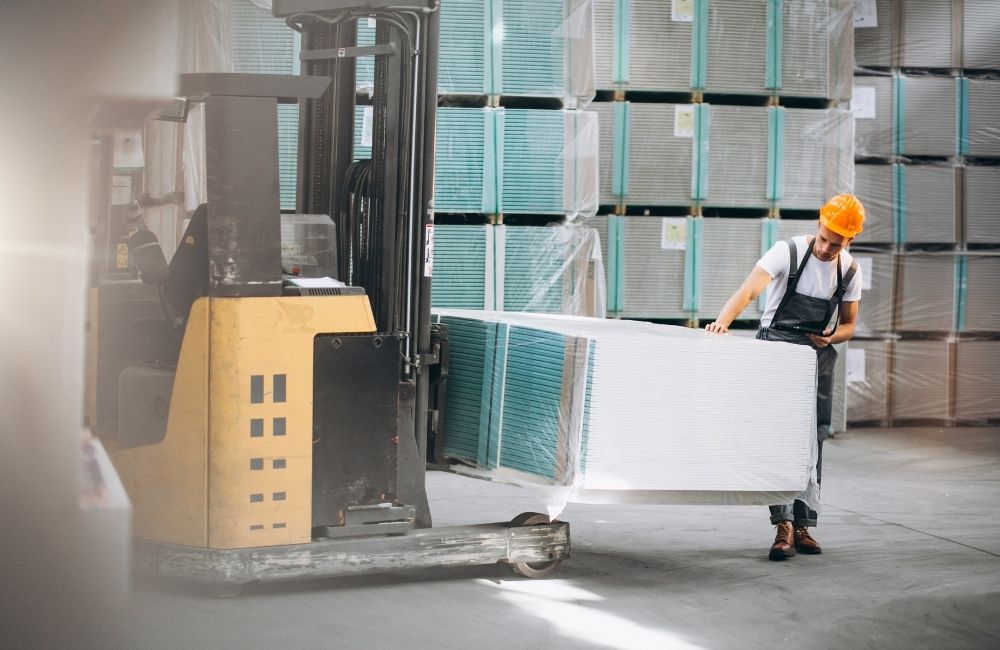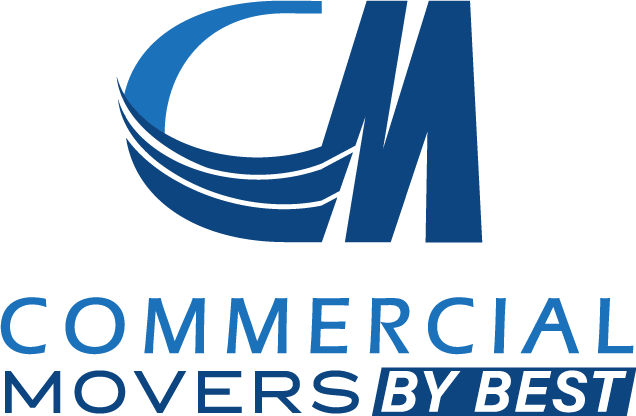Moving an industrial facility is nothing like relocating an office or a home, and with industry revenue growing at a 2.4% CAGR to $23.2 billion in 2024, the demand for specialized expertise has never been higher. While general movers may excel at residential or light commercial moves, they often lack the tools, training, and expertise needed for high-stakes industrial projects.
Here are five key differences that set experienced industrial equipment movers apart from general moving services.
Key Takeaways
✔ Professional industrial movers use specialized tools and heavy-duty equipment to move large and sensitive machines safely.
✔ Industry knowledge and technical skill allow industrial movers to handle complex machinery, layouts, and compliance standards.
✔ Detailed planning, permits, and phased schedules help minimize downtime during industrial relocations.
✔ Strict safety protocols and tailored valuation coverage protect both equipment and personnel during high-risk moves.
✔ Turnkey services like disassembly, transport, and reinstallation streamline the process and reduce disruptions.
✔ Customized crating and packing methods protect equipment from shock, moisture, and transport damage.
✔ Strategic downtime management keeps operations running with minimal interruption throughout the move.
1. Specialized Equipment and Handling Techniques
General movers rely on basic tools like dollies and ramps, but industrial moves require much more. Professional industrial movers use purpose-built equipment designed for the weight, size, and sensitivity of machines found in factories, warehouses, and labs. This difference in gear—and the know-how to use it—can mean the difference between a smooth transition and a costly setback.
How Proper Equipment Makes or Breaks an Industrial Move
- Hydraulic Lift Systems and Rigging Tools: These systems allow heavy machinery movers to safely lift, shift, and position oversized machines that weigh several tons. Without this equipment, moving a press or lathe becomes risky and can lead to injury or damage.
- Air-Ride Trailers and Load-Leveling Tech: Unlike standard moving trucks, air-ride trailers cushion vibrations during transport, reducing the risk of internal damage to sensitive commercial equipment. Load-leveling systems ensure even weight distribution, which is critical during long hauls or moves through urban environments.
- Forklifts and Gantries With Certified Operators: Industrial moving services come equipped with heavy-duty gear and licensed personnel who understand load limits, center of gravity, and machinery fragility. A large equipment moving company uses this expertise to move items that general movers are not trained to handle safely or efficiently.
2. Industry Knowledge and Technical Skill
Moving heavy equipment isn’t just physical—it’s highly technical. Professional industrial movers bring specific experience with machinery types, floor layouts, utility connections, and compliance standards. This knowledge ensures equipment is moved correctly, reassembled properly, and restarted without issue.
Why Industry Experience Matters More Than Muscle
- Understanding Complex Equipment Requirements: Commercial equipment movers often deal with machines that require special handling—like CNC machines, chillers, or robotics. These movers know how to safely disassemble, protect, and reinstall delicate components without damaging calibration or software systems.
- Facility-Specific Knowledge: Each industrial setting—whether it’s a food plant, print shop, or data center—comes with its own operational rules and safety protocols. Industrial moving services factor in industry regulations, floor loads, and spacing to plan each move effectively.
- Coordination With Engineers and Maintenance Teams: A large equipment moving company often works alongside facility engineers and in-house technicians to disconnect, label, and reassemble machines. This collaboration helps prevent costly mistakes and streamlines machine downtime during warehouse relocation services.
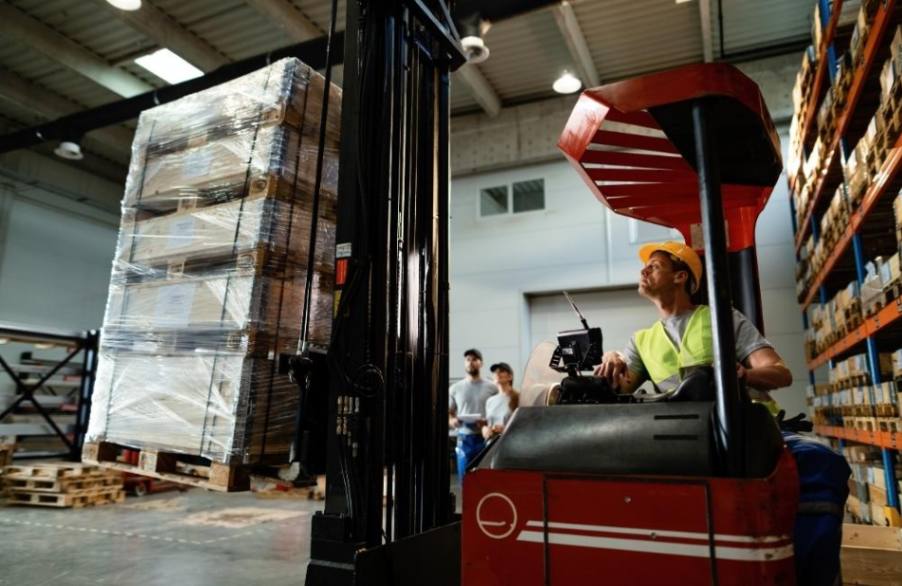
3. Planning, Permits, and Project Management
Unlike general movers, who often operate on simple day-of logistics, industrial projects require detailed preparation. Heavy machinery movers develop structured timelines, secure permits, and anticipate site-specific challenges before any equipment is touched.
How Planning Translates to Lower Downtime and Safer Moves
- Advance Site Assessments and Route Planning: Professional industrial movers evaluate door widths, floor strength, ceiling clearance, and loading dock access ahead of time. They also plan transport routes that avoid low bridges, weight-restricted roads, or traffic-heavy zones.
- Permit Coordination and Legal Compliance: Moving oversized loads may require road permits, police escorts, or special scheduling. Industrial moving services understand how to navigate DOT regulations, state requirements, and municipality rules that general movers may overlook.
- Detailed Schedules and Contingency Planning: Commercial equipment movers build out day-by-day plans that align with facility shutdowns or production pauses. This proactive planning limits disruption, especially for clients relying on warehouse relocation services for minimal downtime.
4. Safety Standards and Valuation Protection
Industrial moves carry higher risk—both physically and financially. Professional industrial movers follow strict safety protocols and carry valuation coverage tailored to high-value equipment. In contrast, general moving services may not be equipped to handle the liability that comes with a major machinery relocation.
Why Safety Isn’t Just a Checklist—It’s a Core Requirement
- Certified Training and Protective Equipment: Heavy machinery movers complete safety training and often hold certifications in rigging, confined space entry, and electrical awareness. They also use PPE and follow lockout/tagout protocols when disconnecting or handling machines.
- Coverage for High-Value Equipment: A large equipment moving company typically carries coverage that protects against damage to expensive machines and production losses. General movers often lack coverage suited for the risks involved in industrial moving services.
- Risk Assessment and On-Site Supervision: Before the move begins, commercial equipment movers perform job hazard analyses to identify potential safety issues. On-site supervisors ensure crews follow procedures, which keeps both workers and equipment protected.
5. Turnkey Solutions for Full-Scale Relocations
A residential mover might help pack boxes and load a truck—but that’s where the job ends. Professional industrial movers offer end-to-end solutions that include disassembly, crating, transport, reassembly, and final calibration.
How Full-Service Industrial Movers Deliver True Value
- Custom Crating and Equipment Protection: Machinery often needs custom crates with vibration-dampening and moisture protection features. A large equipment moving company has the resources and knowledge to build secure packaging for international or long-haul shipments.
- Reinstallation and Calibration Support: Once the equipment arrives, professional industrial movers don’t just drop it off—they install it, level it, and help bring it back online. This ensures minimal production delays and reduces the need for extra service calls.
- Storage and Staging Capabilities: Many industrial moving services offer warehouse space to stage equipment, store overstock, or time delivery with construction schedules. This flexibility is critical during phased projects or full warehouse relocation services involving multiple departments.
How to Prepare a Facility for an Industrial Move
Preparing a facility for a major industrial relocation requires detailed coordination, planning, and communication across departments to ensure that every piece of equipment is accounted for, protected, and ready for safe transport. Whether a company is hiring professional industrial movers or a large equipment moving company, proper preparation is critical for a smooth and efficient transition.
1. Conduct a Full Equipment Inventory
Every successful industrial move begins with a complete inventory of all equipment, parts, and tools. Listing model numbers, dimensions, weight, and operational status helps commercial equipment movers plan properly. This step allows professional industrial movers to assess lifting needs, rigging strategies, and transport methods specific to the equipment.
2. Assign a Move Coordinator or Internal Point Person
Having a dedicated person to manage internal communications ensures nothing gets overlooked. This individual should work directly with the large equipment moving company to align timelines, confirm access to equipment, and report any internal restrictions. Industrial moving services benefit greatly from having a reliable on-site contact who understands the facility layout and workflow.
3. Schedule Equipment Shutdown and Disconnection
Shutting down machines is not as simple as flipping a switch—cooling, draining, and powering down systems must follow safety procedures. Heavy machinery movers often coordinate with plant engineers to time this process properly. In most cases, equipment needs to be fully disconnected from gas, electric, or hydraulic lines before warehouse relocation services can begin.
4. Clear Access Routes and Work Areas
Pathways, hallways, and doorways must be cleared of obstacles to accommodate large-scale equipment. Industrial moving services require adequate space for forklifts, rigging gear, and heavy machinery movers to maneuver safely. It’s also essential to temporarily relocate items like shelving units or pallets that block movement zones.
5. Label and Document Everything Clearly
Detailed labeling prevents confusion when equipment arrives at the new site. Parts should be marked with their original location, orientation, and destination area, especially during full warehouse relocation services. This step is key for large equipment moving companies that disassemble and reassemble machines across multiple zones.
6. Coordinate With Departments Affected by the Move
Industrial moves often impact multiple departments, including production, maintenance, and IT. Notifying teams about move timelines ensures minimal disruption to operations and allows staff to prepare accordingly. Professional industrial movers can then work around peak hours or schedule the relocation in phases, reducing downtime.
How Professional Industrial Movers Handle Machine Downtime
With 16,851 moving companies operating in the U.S. as of 2025, choosing the right one matters—especially since downtime during a facility move can mean lost revenue, missed deadlines, and disrupted workflows. That’s why professional industrial movers in White Plains, NY, develop detailed strategies to reduce or eliminate unnecessary interruptions.
From planning around production schedules to offering turnkey services, experienced commercial equipment movers take every measure to keep operations moving even during transition.
1. Create a Phased Moving Plan
Instead of shutting everything down at once, professional industrial movers break large projects into manageable phases. This allows some machines to stay operational while others are disconnected and relocated. It’s a common method used by warehouse relocation services to reduce downtime and maintain productivity.
2. Schedule Moves During Off-Hours or Shutdown Windows
Many industrial moving services work during nights, weekends, or scheduled production breaks to avoid interrupting key operations. By aligning the move with planned shutdown periods, heavy machinery movers help facilities stay on track without extending downtime. This flexibility is a key advantage over general moving services.
3. Use Pre-Staged Equipment and Crating
A large equipment moving company often pre-stages crates, tools, and materials near machines before the actual move begins. This preparation reduces handling time and speeds up the relocation process. Commercial equipment movers use this tactic to streamline transitions, especially in tight timeframes.
4. Reinstall and Recalibrate on Arrival
Once the equipment reaches its new location, professional industrial movers assist with reassembly and calibration to get machines back online fast. Their knowledge of machine specs and layouts allows them to reduce troubleshooting time. This hands-on approach minimizes operational downtime that general movers cannot accommodate.
5. Coordinate With On-Site Technicians and Engineers
Industrial moving services don’t work in isolation—they partner with in-house teams to time disconnects and restarts with precision. This collaboration ensures safe power-down procedures and efficient reinstallation. Heavy machinery movers rely on that coordination to meet strict production timelines.
6. Offer Temporary Storage for Sequenced Delivery
Sometimes machines can’t go straight from old site to new due to construction, layout changes, or timing. A professional industrial mover often provides secure storage until each piece is ready to install. This sequencing service, common with warehouse relocation services, allows teams to control downtime more effectively.
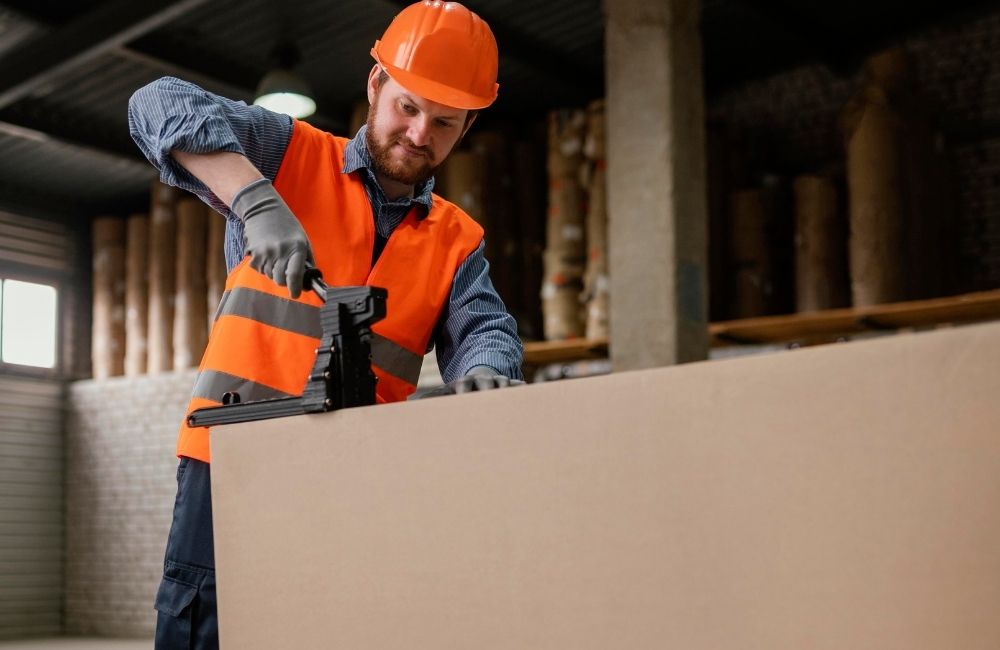
How Crating and Packing Are Customized for Industrial Equipment
Crating and packing are not one-size-fits-all in industrial moves. Machines vary in size, sensitivity, and value—so commercial equipment movers must tailor each crate and packing method to the specific asset. Professional industrial movers focus on protection, safety, and efficiency to make sure equipment arrives intact and ready to perform.
1. Custom Crates Built to Equipment Specs
Unlike standard shipping crates, industrial crates are built to match the exact dimensions and weight of each machine. Professional industrial movers use reinforced materials like heat-treated lumber, steel supports, and shock-absorbing inserts. A large equipment moving company ensures these custom crates support the equipment during both transit and storage.
2. Vibration and Shock Dampening Solutions
Heavy machinery movers often protect sensitive components with foam lining, rubber isolators, and vibration-reduction platforms. These materials help minimize internal movement during transport, especially for precision machines like CNCs or laboratory instruments. Industrial moving services know that even small shocks can damage alignment or calibration.
3. Moisture and Climate Protection
Many machines have electronics or materials that can corrode when exposed to moisture or fluctuating temperatures. Commercial equipment movers use vapor barriers, desiccants, and climate-controlled containers to prevent environmental damage. This level of packing is common in warehouse relocation services where storage may occur before delivery.
4. Rigging and Crating Coordination
Rigging teams often work with crating teams to ensure machines are properly secured before lifting or tilting. Professional industrial movers integrate lift points, load distribution plans, and bracing methods directly into crate design. This coordination prevents shifting and structural stress when equipment is moved by forklifts.
5. Labeling and Documentation Inside Crates
Industrial moving services take extra steps to label internal parts and include diagrams, hardware packets, or installation notes inside the crate. This makes reassembly easier at the new site and reduces errors during setup. Heavy machinery movers rely on this organization to avoid delays during reinstallation.
6. Export-Ready and Long-Haul Packaging
When machines are moved internationally or cross-country, packing requirements go up a level. A large equipment moving company prepares crates that meet ISPM-15 export standards and ensures stability for long-distance hauls. These services are a must for commercial equipment movers handling high-value freight with tight delivery timelines.
Frequently Asked Questions (FAQs)
Can professional industrial movers handle international relocations?
Yes, many professional industrial movers offer international relocation services for businesses expanding or relocating overseas. These projects require knowledge of customs regulations, freight logistics, and export documentation. A large equipment moving company with international experience can handle crating, shipping, and delivery to meet global compliance standards. When choosing industrial moving services, it’s important to confirm that the provider is familiar with cross-border requirements.
Do commercial equipment movers offer equipment decommissioning services?
Some commercial equipment movers also provide decommissioning services, which include safely powering down, disconnecting, and preparing machinery for removal. This process may involve draining fluids, disassembling components, and documenting conditions before transport. Professional industrial movers who specialize in this service often work with engineers to ensure equipment is safely taken offline.
How far in advance should a facility plan for a move?
Ideally, planning for an industrial move should begin at least 3–6 months in advance, especially for large or multi-phase projects. Early planning allows time to coordinate with professional industrial movers, schedule site visits, and handle any permitting or compliance issues. A large equipment moving company may require extra lead time if specialized rigging or international transport is involved.
Are warehouse relocation services available for temperature-sensitive products?
Yes, many warehouse relocation services include climate-controlled transport and storage for sensitive products or equipment. This is especially useful for industries like pharmaceuticals, electronics, and food processing. Professional industrial movers can provide insulated containers, temperature monitoring, and time-sensitive scheduling to protect products in transit. These services are typically offered by experienced commercial equipment movers with access to specialized vehicles and facilities.
What happens if a machine is damaged during the move?
If damage occurs, a reputable large equipment moving company will have valuation coverage and a claims process in place to address the issue. It’s important to work with professional industrial movers who valuation coverage tailored to industrial assets and high-value machinery. Many commercial equipment movers also perform pre- and post-move inspections to document the condition of each item. This documentation is essential for resolving disputes quickly and minimizing financial loss.
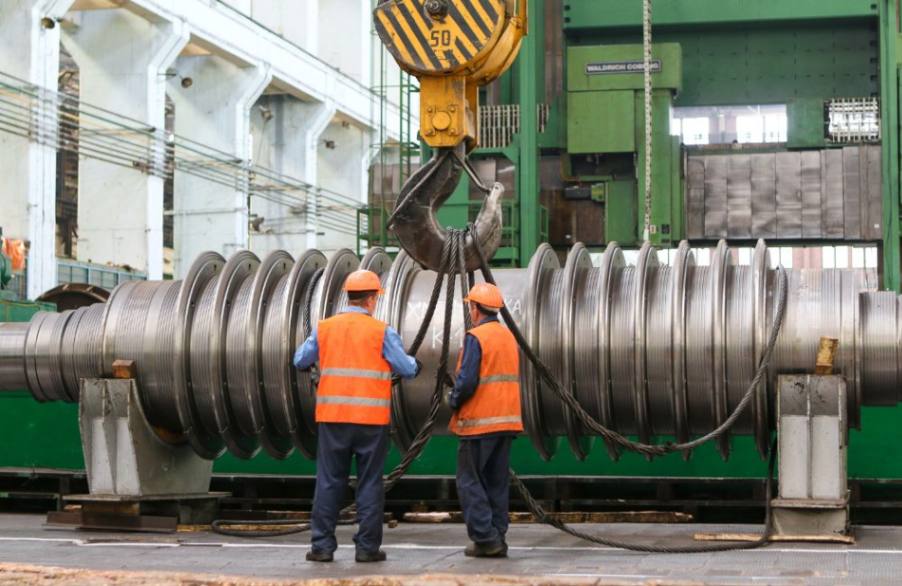
Move Smarter Today with Commercial Movers By Best!
When it’s time to relocate a business, trust the team that gets it done right. Commercial Movers By Best brings experience, precision, and speed to every move in White Plains, NY—whether it’s an office transition, a warehouse relocation, or specialized equipment transport. With trained crews, detailed planning, and reliable logistics, the focus stays on keeping your operations running smoothly from start to finish.
Get a seamless commercial moving experience backed by professionalism and a reputation built on results.

